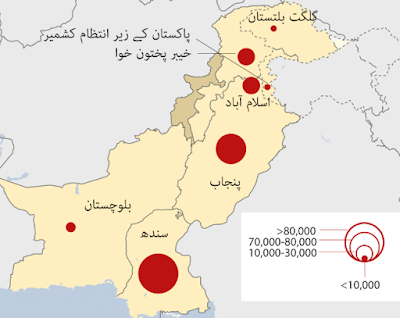Village care in disease and health
There is a small iron cupboard in a corner of Oma Patil's two-room house. It contains a decade's worth of handwritten records in the form of photocopies of large registers, notebooks, diaries and survey forms. They are all placed on top of each other in thick polythene bags.
These are the piles of ever-growing paper in which the health of most people in rural Maharashtra is recorded through approved social health workers (ASHA) - from childbirth, to vaccinations, to youth nutrition, to contraception. Up to data on pregnancy, tuberculosis, etc. Uma is keeping this record of the people of Arag village of Miraj taluka in Sangli district of Maharashtra. And she is constantly trying to inform and guide her village about health issues.
In rural Maharashtra, like 8-year-old Oma, 5,000 Asha workers ensure basic health services in their villages for a long time every day. The workforce was established in 2012 as part of the National Rural Health Mission (NRHM). These holistic health workers, who are all women, are deployed after 5 days of training. The NRHM has a population of one for every 5 people in tribal villages (who have completed at least 8th class), and 3 people in non-tribal villages (who have passed at least 8th class). Has made an 'Asha' worker mandatory.
In Arag, a large village of about six people, along with Oma, two other Asha workers leave every morning at around 9 p.m. Arag Mirage is also the basic PHC (Primary Health Center) for the villages of Bedag, Lingnur, Khatu, Shinde Wari and Lakshmi Wari in the taluka - the total population of the taluka is about 4, where 3 Asha workers are stationed.
Each Asha worker visits each assigned home, and usually spends more than five hours a day on this task.
"If the houses are inside the village, 2-3 visits can be made in two hours. But some people live on the outskirts or in the fields. In such cases, even four trips take more than five hours. And we have to go through bushes, fields and muddy paths. It gets worse during the monsoons, "says Oma.
Home visits include family health care, talking about contraception, providing relief from minor illnesses such as coughs and fevers, preparing pregnant women for maternity and breastfeeding, newborns (especially Monitoring low birth weight and premature babies, monitoring children with diarrhea, anemia and malnutrition, ensuring they are fully vaccinated, preventing or treating diseases such as tuberculosis and malaria To try. This is an endless list of tasks.
"We make sure that no household is deprived of any [health] survey or health care. There are no seasonal migrants or their families, ”says Oma,
who also grows corn on her one-acre farm with her husband Ashok.In return, the monthly earnings of an Asha worker - called 'incanto' or 'honorarium' by the government - in Maharashtra, depending on the work, averages Rs. For example, they receive Rs. 3 for each packet of condoms and contraceptive pills, Rs. 5 for each institutional maternity check, and Rs. 5 for each home visit for neonatal screening. ۔
In addition, in these ever-increasing notebooks, health workers have to keep track of all their visits, monitoring and surveys.
"I earn Rs 5 per month and spend about Rs 5 on notebooks, photocopies, travel and mobile recharge," says Oma. "We have to make two photocopies of each original form. One we assign to the assistant and the other we retain. It costs Rs. 5 on one side [photocopying] ... "
These farms abound - home-based Newborn farms, the Janani Sarksha Yojana Farm for pregnant women, household surveys on toilet and drinking water sources, leprosy statistics - it continues to grow. ۔ This is followed by the Village Health and Nutrition Day survey, which notes how many joined the monthly program, tested for hemoglobin levels, vaccinated children, and tested for malnutrition - the same type. Includes about 5 details.
The data collected by Oma and other Asha workers is uploaded on the state government's NRHM site at the end of each month. When I went there, I saw an 8-year-old Priyanka Pujari, an assistant at Arag PHC, trying to update the site. The health center has three one-story buildings with a computer, a doctor's cabin and seating area, a laboratory for testing blood and a storeroom for medicines. Typically, an 'assistant', Asha, oversees the work of the workers and works at the PHC from 9 a.m. to 6 p.m. The PHC also has (at least on paper) a nurse, a doctor and a medical technician.






Comments
Post a Comment